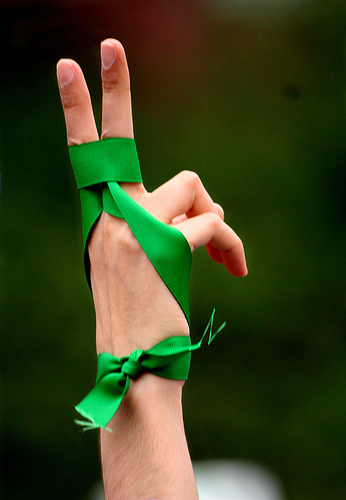Did We Win? Iran’s Elections Unpacked

February 26th saw Iran hold its parliamentary elections, which led to one of the most drastic shakeups that Iran has seen to date. As progressive as this sounds, the victory is bittersweet. Iran’s electoral system has a loophole in the shape of a political council known as the Assembly of Experts: it is a democratically elected group of individuals that has the ability to veto potential candidates from running in the election. With over 12,000 individuals filed for candidacy, the nomination of 5,200 of those candidates were vetoed from participating, of which a huge majority were Reformists, the most progressive of Iran’s three dominant parties. In the simultaneous election for the Assembly of Experts, 80% of candidates were barred from running, including every female, most notably Zohreh Sefati, a top Islamic law expert.[1]
Although this sounds undeniably authoritarian, there is some hope for Iran’s political agenda in the coming years. The elections did see 30 Reformists win every seat in the capital, Tehran, which is a huge victory for the progressive party. In addition, at least 14 women have won seats with another 7 women qualifying for a second set of voting in April. To a western reader, this does not sound like equality and it isn’t. Iran’s population is made up of 49% women but only 9.4% of the candidates are female, which shows a drastic disparity between population and representation.[2] However, in a country such as Iran, where part of the leadership is a number of authoritarian, non-democratically elected councils, an influx of reformist and progressive candidates shows a significant move towards a more equal and representative government.

The complexity of Iranian politics lies in the make up of its political system. Rather than operating in a single form of government such as a democracy or theocracy, Iran cloaks itself in three different styles that appear at first incompatible. In the words of Karim Sadjapour, an American policy analyst at the Carnegie Endowment, “The Islamic Republic of Iran is a limited democracy, wrapped in a military autocracy, inside a theocracy.”[3] The intricacies and the tightly wound organisation of Iran’s government makes victories such as this one slightly shallow. What use are progressive female MPs if they are gagged and silenced by a misogynistic, male-dominated theocratic government?
Moreover, the presence of more female MPs does not always translate to greater support for women’s rights. One MP Fatemeh Alia supported banning women from watching an international volleyball tournament in 2014 because a woman’s primary duty was ‘to stay at home’ and to serve her husband and children.[4] However, she was subsequently voted out in this election.
It sounds incredibly bleak to view Iran’s elections as non-progressive and it would be wrong to see the Reformist victory as a hollow one. Ayatollah Rafsanjani led the Reformist Party to a large increase in Reformist members in the Assembly of Experts, which may be asked to select a new Supreme Leader if Ali Khamenei, aged 76, passes away. Tehran was a landslide victory for progressives and despite what I’ve said previously, an increase in female MPs can be seen as a positive development, as it does present a shift in the gender politics of Iran. Just because one female MP had radical views does not mean they all will.
The elections were the first to be held after the historic US-Iran Nuclear deal that came to fruition in January 2016. With Iran moving towards a more progressive government, political analysts in Washington are praying that this coincides with a will to maintain and uphold the deal. In addition, a Reformist-leaning government means a government that will reject the anti-western foreign policy that has been associated with Iran in recent years. Western media has taken the opportunity to negatively characterise Iran as a country filled with radicals who despise the West when the contrary is true. Popular feeling is not one of animosity, and the movement towards a popularly supported government will show this on the international stage.
In the end, this is mostly speculation. We can only theorise what this new government will do for Iran and its international image. The Revolutionary Guard still has prisons filled with US citizens and dissenters against the current regime, a trend that does not seem to change anytime soon.[5] Furthermore, as so many reformists and independent candidates were disqualified, many of the MPs who have been elected are unknown to the public and party lines, blurring stances on political positions or domestic policy.
What we can say is that it appears that Iranian politics is turning a new leaf and making a move, no matter how small, towards an age of progressive views and reformist policy. There are a handful of good signs that we can clutch on to, but we shouldn’t proclaim a victory for democracy and equality just yet. Saeed Laylaz, a reformist political commentator in Iran believes we have to wait and see. “[Iran] is like a watermelon, until you open it up, you don’t know what’s inside.”[6]
[1] http://www.aljazeera.com/news/2016/03/iran-election-women-parliament-160301121014801.html
[2] ibid.
[3] http://www.theatlantic.com/international/archive/2016/03/iran-election-results-winner/472128/
[4] http://www.aljazeera.com/news/2016/03/iran-election-women-parliament-160301121014801.html
[5] Paraphrased from Azar Nafisi in her interview with Mehdi Hasan for Upfront: http://www.aljazeera.com/programmes/upfront/2016/03/iran-elections-change-change-160304125706878.html
[6] http://www.theguardian.com/world/2016/feb/28/iranian-elections-deal-blow-to-hardliners-as-reformists-make-gains
All images taken from Flickr Creative Commons.

